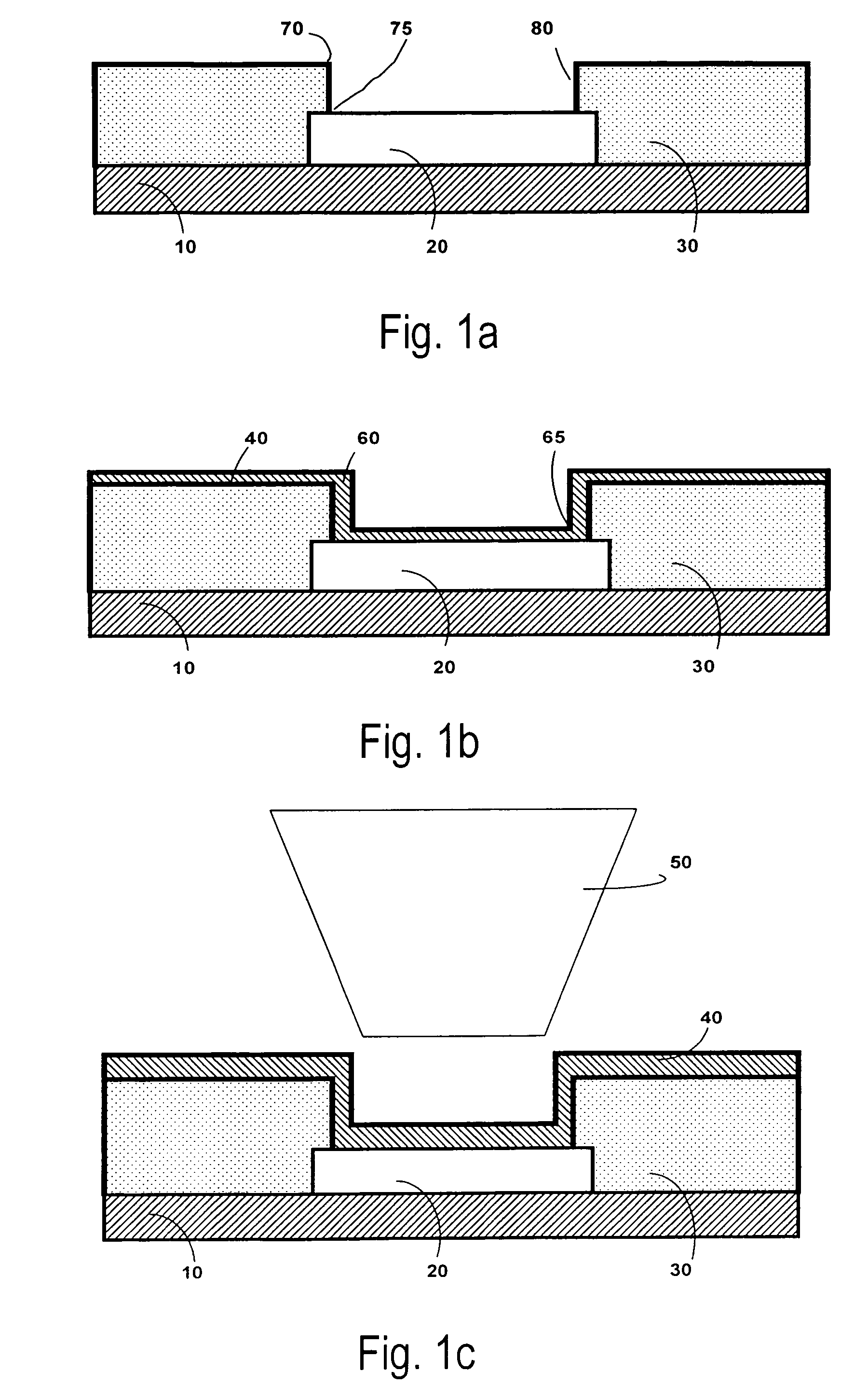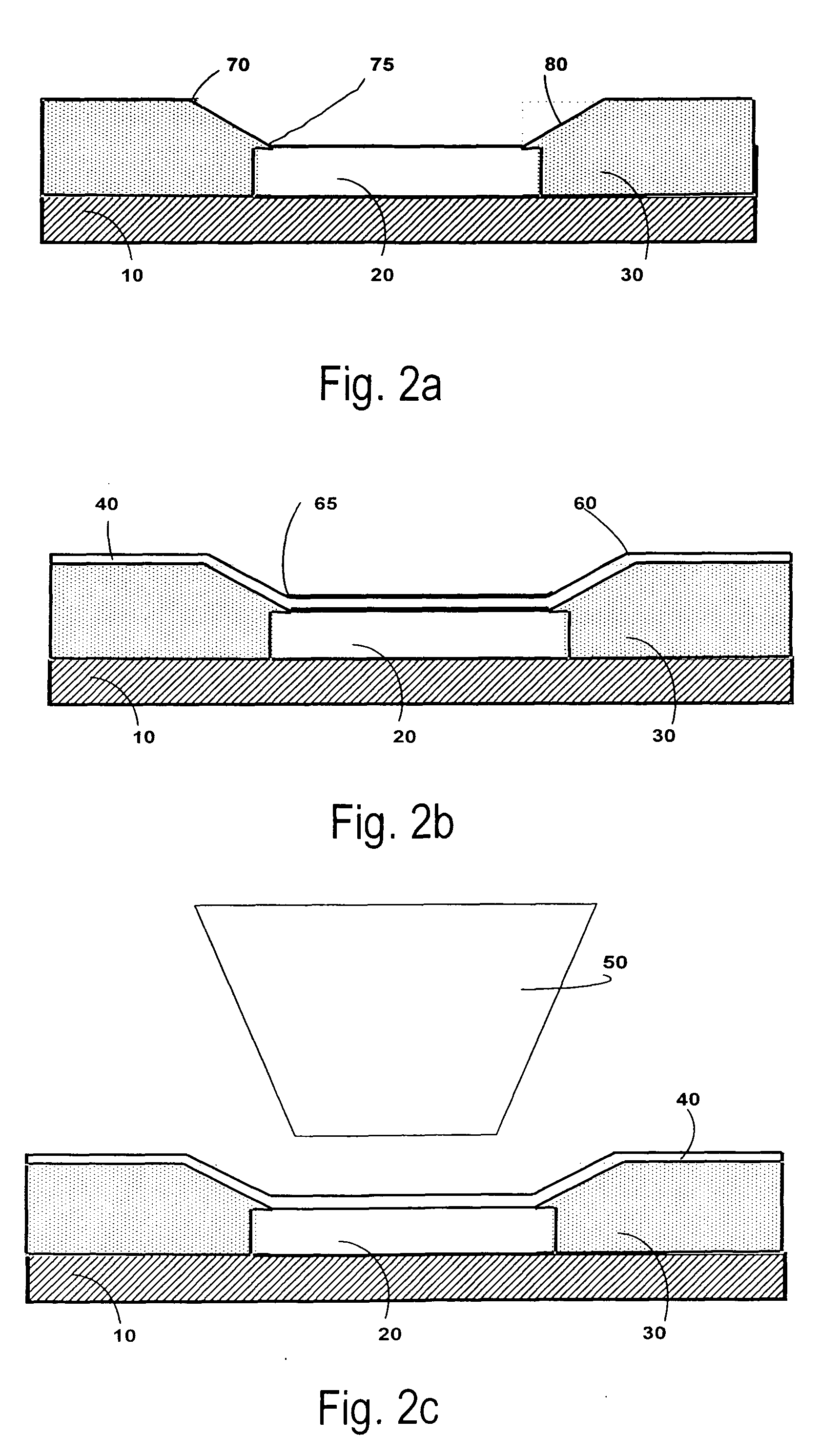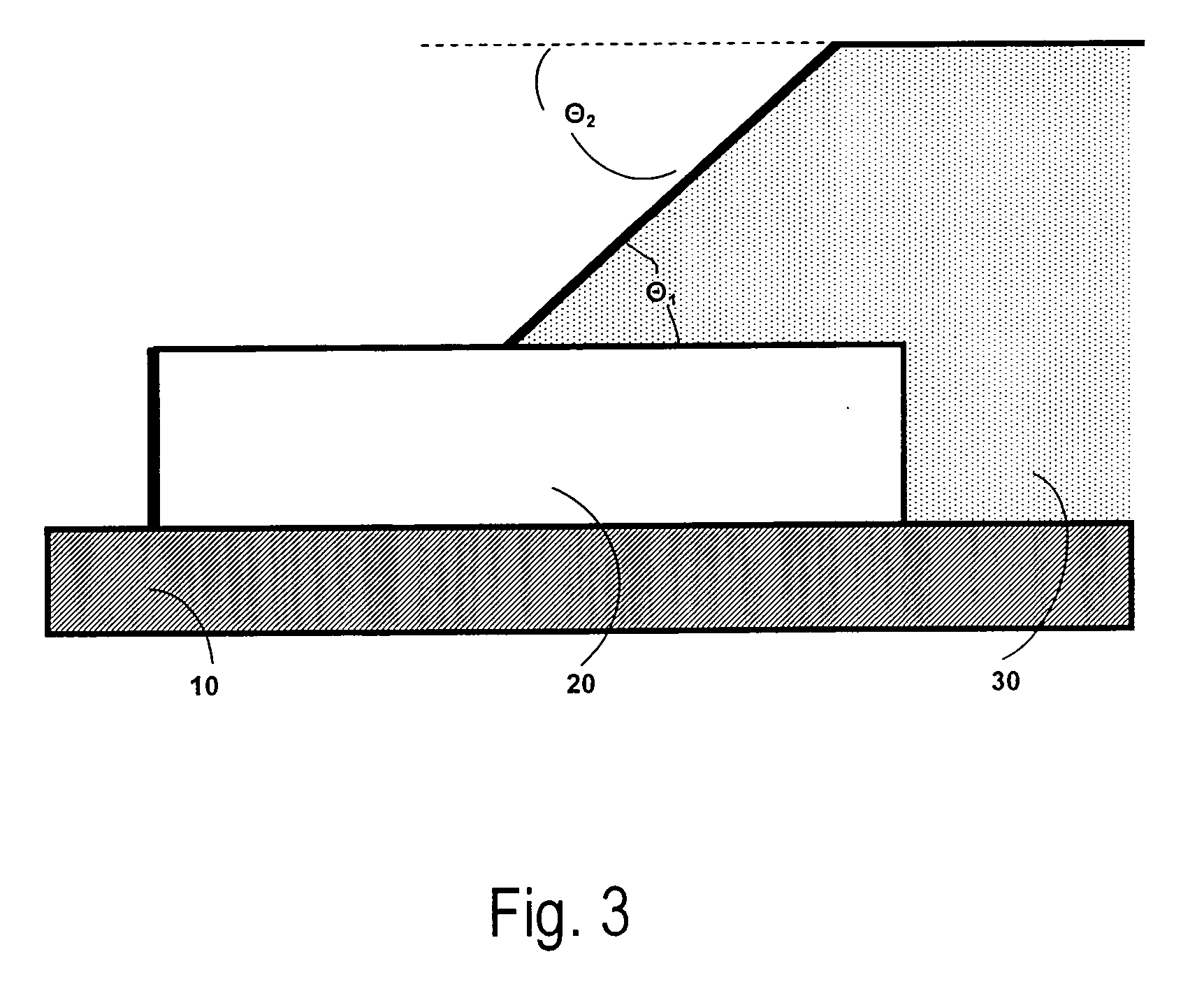Positive photosensitive polybenzoxazole precursor compositions
a technology of photosensitive polybenzoxazole and precursor composition, which is applied in the field of positive photosensitive polybenzoxazole (pbo) precursor composition, can solve the problems of high induced stress of metal layers, cracks and delamination of metal layers, and device functional failure, so as to reduce cracking and delamination, and reduce the induced stress
- Summary
- Abstract
- Description
- Claims
- Application Information
AI Technical Summary
Benefits of technology
Problems solved by technology
Method used
Image
Examples
synthesis example 1
Synthesis of Polybenzoxazole Precursor Polymer of Structure Type I
[0182]
[0183]To a 2 liter, three-necked, round bottom flask equipped with a mechanical stirrer, nitrogen inlet and addition funnel, 155.9 g (426.0 mmol) of hexafluoro-2,2-bis(3-amino-4-hydroxyphenyl)propane (BisAPAF), 64.3 g (794.9 mmol) of pyridine, and 637.5 g of N-methylpyrrolidone (NMP) were added. The solution was stirred at room temperature until all solids dissolved, then cooled in an ice water bath at 0-5° C. To this solution, 39.3 g (194 mmol) of isophthaloyl chloride, and 56.9 g (194 mmol) of 1,4-oxydibenzoyl chloride dissolved in 427.5 g of NMP, were added drop-wise. After the addition was completed, the resulting mixture was stirred at room temperature for 18 hours. The viscous solution was precipitated in 10 liters of vigorously stirred deionized water. The polymer was collected by filtration and washed with deionized water and a water / methanol (50 / 50) mixture. The polymer was dried under vacuum conditions...
synthesis example 2
Preparation of a PBO Precursor Polymer of Structure Type III with a p-Toluene Sulfonyl Endcap. (IIIa-2)
[0185]
[0186]The PBO precursor polymer obtained in Synthesis Example 1 (100 g) was dissolved in a mixture of 500 g of diglyme and 300 g of propylene glycol methyl ether acetate (PGMEA). Residual water was removed as an azeotrope with PGMEA and diglyme using vacuum distillation at 65° C. (10-12 torr). About 400 g of solvents was removed during the azeotropic distillation. The reaction solution was placed under a N2 blanket. The reaction mixture was cooled on an ice bath down to 5° C. and 3.2 g of pyridine was added at once followed by 8.5 g of p-toluene sulfonic acid chloride. The reaction mixture was allowed to warmed up to room temperature and stirred overnight.
[0187]The reaction mixture was precipitated into 6 liters of deionized water while stirring. The precipitated polymer was collected by filtration and air dried overnight. Then the polymer was dissolved in 500-600 g of aceton...
synthesis example 3
Synthesis of a Polymer of Structure Type III with Acetyl Endcap (IIIa-1)
[0189]
[0190]3 small batches of polybenzoxazole precursor polymers synthesized according to Synthesis Example 1 were mixed to obtain 100 g (184.5 mmole) of a polybenzoxazole precursor polymer mixture with inherent viscosity of 0.205 dl / g. The mixture was dissolved in 1000 g of diglyme. Residual water was removed as an azeotrope with diglyme using a rotary evaporator at 65° C. (10-12 torr). About 500 g of solvent was removed during the azeotropic distillation.
[0191]The reaction solution was transferred to a 1 liter, three neck, round bottom flask equipped with N2 inlet and magnetic stirrer. The reaction mixture was cooled with an ice bath down to about 5° C. 3.3 ml of acetyl chloride (3.6 g) was added via syringe over a 5 minute period while stirring the reaction mixture. The reaction mixture was kept on the ice bath for about 10 more minutes following the completion of the addition of the acetyl chloride. Then th...
PUM
| Property | Measurement | Unit |
|---|---|---|
| temperatures | aaaaa | aaaaa |
| temperature | aaaaa | aaaaa |
| temperature | aaaaa | aaaaa |
Abstract
Description
Claims
Application Information
 Login to View More
Login to View More - R&D
- Intellectual Property
- Life Sciences
- Materials
- Tech Scout
- Unparalleled Data Quality
- Higher Quality Content
- 60% Fewer Hallucinations
Browse by: Latest US Patents, China's latest patents, Technical Efficacy Thesaurus, Application Domain, Technology Topic, Popular Technical Reports.
© 2025 PatSnap. All rights reserved.Legal|Privacy policy|Modern Slavery Act Transparency Statement|Sitemap|About US| Contact US: help@patsnap.com



